Wildlife tracking enthusiasts in the UK understand the thrill of observing animals in their natural habitat. However, tracking and observing wildlife can also be dangerous, which is why it is crucial to stay prepared with the right equipment. In addition to binoculars and cameras, wildlife tracking enthusiasts should also carry first aid kits specifically designed for animal observation safety.
Whether you are a seasoned wildlife tracker or a beginner, accidents can happen anytime, anywhere. Animal bites, cuts, and sprains are common injuries that can occur while tracking wildlife. With the right first aid kit, you can quickly address these injuries and prevent them from becoming more severe.
Wildlife first aid kits come packed with essential supplies necessary for treating injuries that might occur when observing animals. These kits have a wide range of first aid supplies, including bandages, antiseptics, and splints, all designed to cater to the unique needs of wildlife tracking enthusiasts.
Key Takeaways:
- Wildlife tracking enthusiasts are exposed to potential risks while observing animals in their natural habitat.
- Having a first aid kit specifically designed for animal observation safety is crucial.
- Wildlife first aid kits are packed with essential supplies necessary to treat injuries that might occur while tracking wildlife.
Why Wildlife Tracking Enthusiasts Need First Aid Kits
If you’re an enthusiastic wildlife tracker, you know that observing animals in their natural habitat can be a thrilling and awe-inspiring experience. However, it’s important to remember that animal observation safety should always be a top priority. Wildlife tracking can also be dangerous, especially if you’re not prepared for potential risks and injuries that may occur.
That’s where having a first aid kit tailored specifically for animal observation safety comes in. These kits are designed to provide you with the essential supplies and equipment needed to treat injuries while out in the field. From minor cuts and scrapes to more serious injuries like fractures and snake bites, a well-stocked first aid kit can make all the difference in managing an emergency situation.
As a wildlife tracking enthusiast, you should always have a first aid kit on hand, ready to use at a moment’s notice. It can mean the difference between a safe and enjoyable experience and a dangerous or even life-threatening situation.
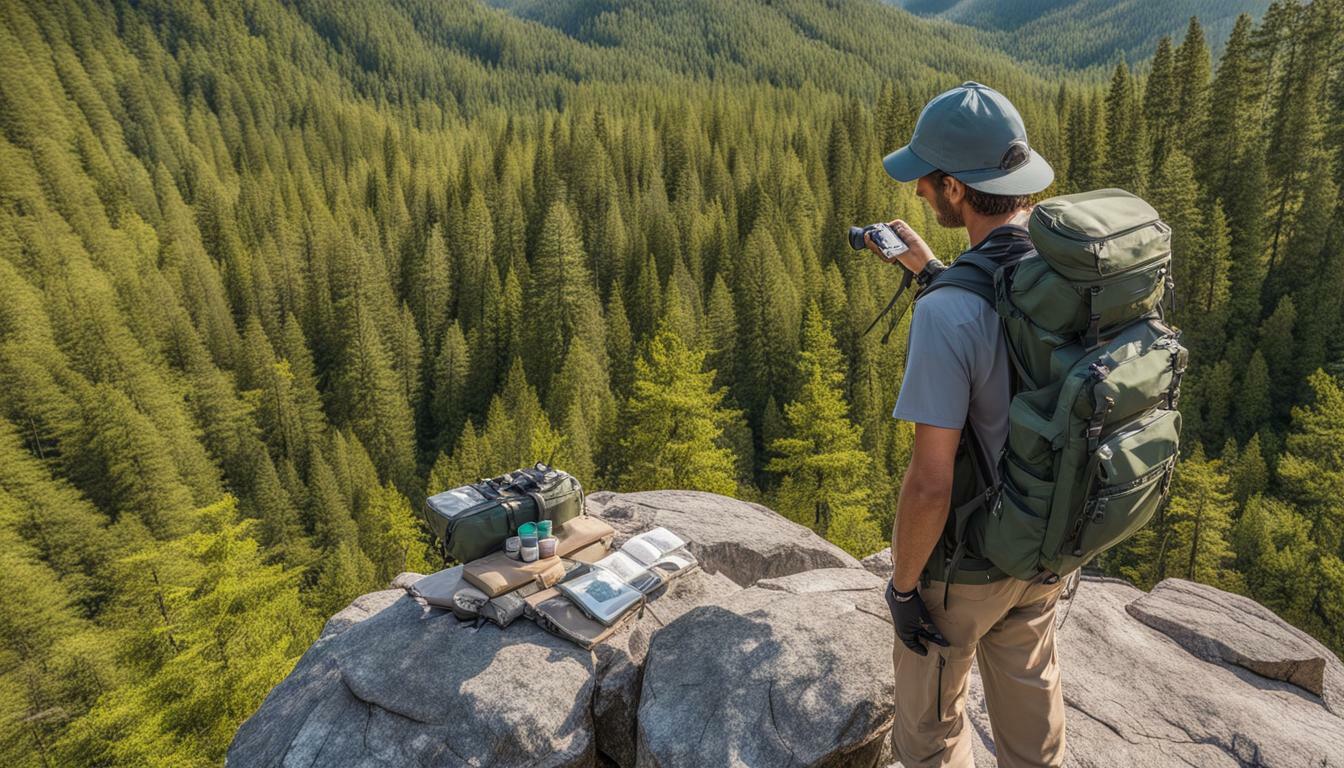
Investing in a first aid kit specifically for animal observation safety is a small but important step in ensuring the safety and wellbeing of both yourself and the animals you’re observing. Make sure to include one in your tracking gear before your next adventure.
Essential Components of Wildlife First Aid Kits
When it comes to selecting a first aid kit for animal observation, it’s important to make sure that it contains all the necessary components to handle potential injuries. While there are pre-packaged kits available on the market, you can also build your own custom kit to suit your specific needs.
The following are some essential components that should be included in wildlife first aid kits:
| Item | Purpose |
|---|---|
| Antiseptic wipes or spray | To clean and disinfect wounds. |
| Adhesive bandages | To cover small cuts and scrapes. |
| Medical tape | To secure dressings and bandages. |
| Gauze pads | To cover and protect larger wounds. |
| Tweezers | To remove splinters or ticks. |
| Scissors | To cut medical tape, gauze, or clothing if necessary. |
| Splint material | To immobilize broken bones or injured limbs. |
| Latex gloves | To protect against bodily fluids and potential infections. |
| Emergency blanket | To prevent hypothermia in case of exposure. |
It’s also important to consider additional items that may be specific to the type of wildlife you will be observing and the environment you will be in. For example, snake bite kits may be necessary in areas where venomous snakes are present, and tick removers may be useful in areas with a high tick population.
Overall, having a well-stocked wildlife first aid kit can make a significant difference in ensuring your safety while observing animals in their natural habitats.
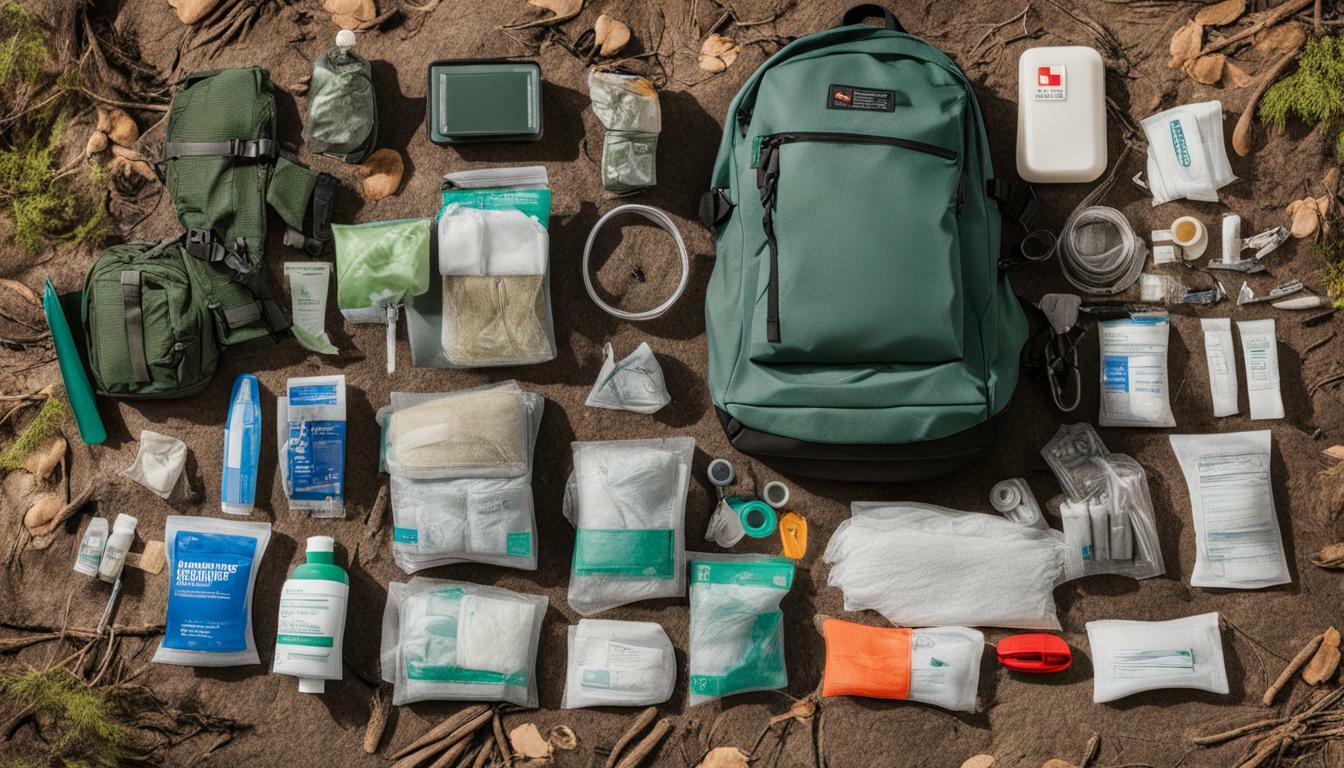
Choosing the Right First Aid Kit for Animal Observation Safety
When it comes to choosing the right first aid kit for animal observation safety, it is important to consider the specific needs of wildlife tracking enthusiasts. Wildlife safety equipment, including first aid kits, must be designed to handle the unique risks and challenges associated with observing animals in their natural habitat.
Size: The size of the first aid kit is one of the most important factors to consider. It should be compact and lightweight enough to carry with you on your wildlife adventures, but also large enough to contain all the essential components needed to handle potential medical emergencies.
Types of injuries: The types of injuries that the first aid kit can handle is another crucial aspect. It should include supplies that are tailored to treat common injuries, such as bites, stings, and sprains. It should also have specialized items like snake bite kits, which are particularly important for those tracking reptiles.
Additional features: The first aid kit may also come with additional features, such as waterproof packaging, reflective strips, or a built-in whistle. These features can be useful for tracking enthusiasts who spend time in difficult terrain or adverse weather conditions.
| Component | Description |
|---|---|
| Bandages | For treating scrapes, cuts, and wounds. |
| Antiseptics | To clean and sterilize wounds. |
| Splints | To immobilize broken bones or sprains. |
| Gloves | To protect against infection and injuries. |
| Tweezers | For removing ticks, splinters, or other foreign objects. |
| Scissors | To cut bandages or clothing in emergency situations. |
| Pain relievers | To alleviate pain and discomfort. |
Keep in mind that the contents of a first aid kit may vary depending on the brand and specific purpose. It is important to carefully read the labels and instructions of any kit you are considering.
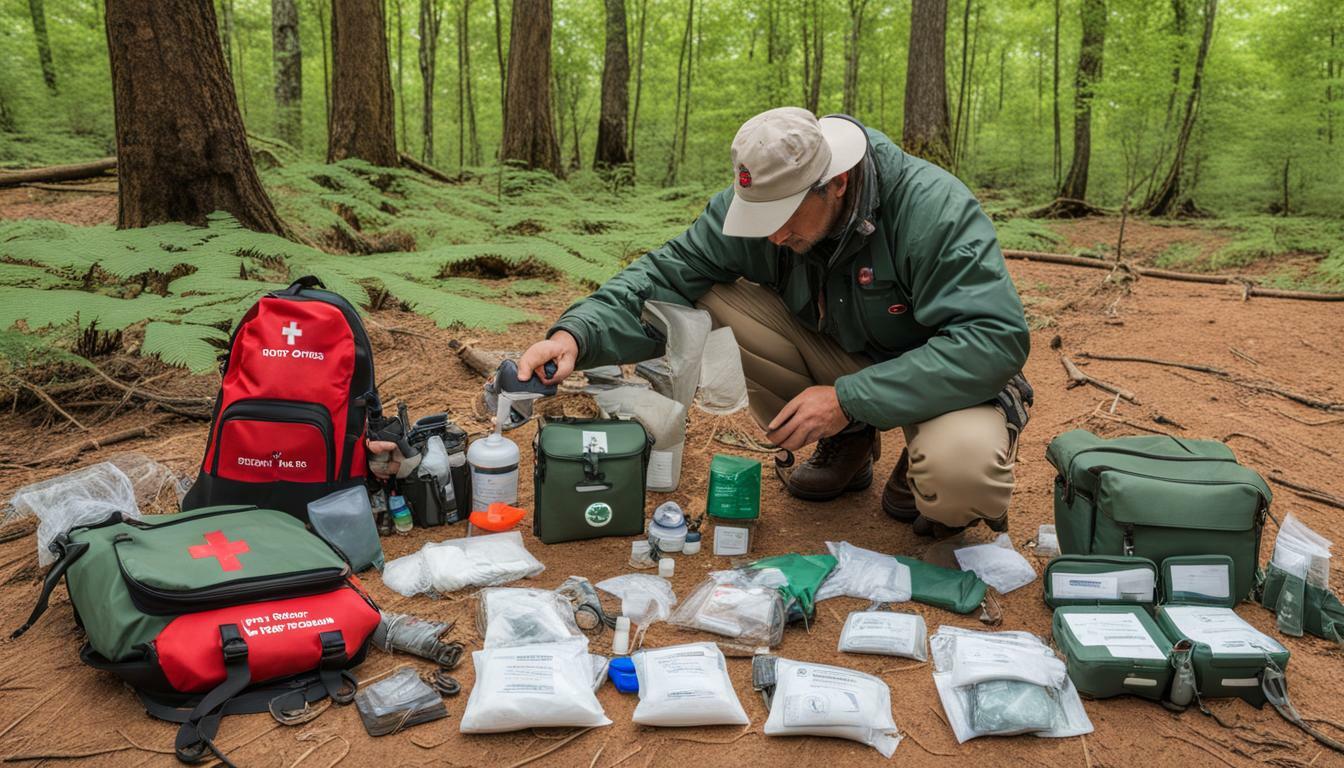
By selecting the right first aid kit for your needs, you can feel confident and prepared while tracking wildlife. Remember to regularly check and replenish your supplies to ensure that they remain up-to-date and effective for any potential medical emergencies.
Recommended Wildlife Tracking Safety Gear
When it comes to observing and tracking wildlife, having the right safety gear is just as important as having a proper first aid kit. Here are some recommended items that wildlife tracking enthusiasts should consider carrying with them:
- Snake bite kit: In case of an encounter with a venomous snake, a snake bite kit can help minimize the effects of the venom.
- Tick remover: Ticks can carry a range of diseases, so having a tick remover handy can help prevent infection.
- Emergency blanket: In case of an unexpected night out in the wilderness, an emergency blanket can help regulate body temperature and prevent hypothermia.
- Water purification tablets: Drinking from natural water sources can be risky, so having water purification tablets can help ensure access to safe drinking water.
- Headlamp: When tracking wildlife, it’s not uncommon to stay out later than planned. A headlamp can help provide visibility in the dark.
Having these items in your tracking enthusiasts emergency kit alongside your wildlife observation first aid kit can help provide comprehensive protection in the field.

“When it comes to wildlife observation safety, being prepared is key. Having the right gear can make a significant difference when in the field.”
Emergency First Aid Techniques for Wildlife Encounters
While having a well-stocked first aid kit is essential for any wildlife tracking enthusiast, it’s also important to have a basic understanding of emergency first aid techniques. In the event of an unexpected injury, being able to act quickly and effectively could make all the difference in ensuring a positive outcome. Here are a few emergency first aid techniques to keep in mind when encountering wildlife in the UK.
- Bleeding: Apply direct pressure to the wound using a cloth or bandage. Elevate the affected area if possible and continue applying pressure until the bleeding stops.
- Broken Bones: Immobilize the affected area with a splint or rigid material to prevent further damage. Use soft padding such as cloth or clothing to cushion the area around the fracture. Seek medical attention as soon as possible.
- CPR: If a person or animal is not breathing, begin CPR immediately. Follow the appropriate technique for the victim’s size and condition, and continue until medical help arrives or until the victim begins breathing on their own.
- Snake Bites: If someone is bitten by a venomous snake, keep the affected area still and immobilized. Seek medical attention as soon as possible and provide details about the snake if possible. Do not try to suck out the venom or apply a tourniquet.
- Tick Removal: Use fine-tipped tweezers to grasp the tick as close to the skin’s surface as possible. Pull upward with steady, even pressure, being careful not to twist or jerk the tick as this can cause parts to break off and remain in the skin. Clean the bite area with soap and water, and apply an antiseptic to prevent infection.
Remember, in any emergency situation, it’s important to stay calm and assess the situation before taking action. If possible, seek help from other members of your group or nearby individuals. If medical attention is required, call emergency services immediately.

“In the event of an unexpected injury, being able to act quickly and effectively could make all the difference.”
Wilderness First Aid Training for Wildlife Tracking Enthusiasts
While having a wildlife first aid kit is crucial, it’s equally essential for wildlife tracking enthusiasts to receive wilderness first aid training. Tracking enthusiasts safety kits should be accompanied by the knowledge and skills necessary to deal with medical emergencies in challenging environments.
Wilderness first aid training involves learning how to provide emergency medical care when medical resources are limited or non-existent. It covers topics such as wound care, fractures, dislocations, snake bites, hypothermia, and many others that are common in the outdoors.
The training is hands-on, and the sessions may take place in an outdoor environment or a classroom. It’s advisable to consider taking a course that is specific to wildlife observation to tailor the training to your needs.
Several organizations offer wilderness first aid training in the UK, such as the Red Cross, NOLS Wilderness Medicine, and St. John Ambulance. You can also search for courses online and find one that suits your schedule and budget. Regardless of where you receive the training, it’s an investment in your safety and that of your wildlife companions.
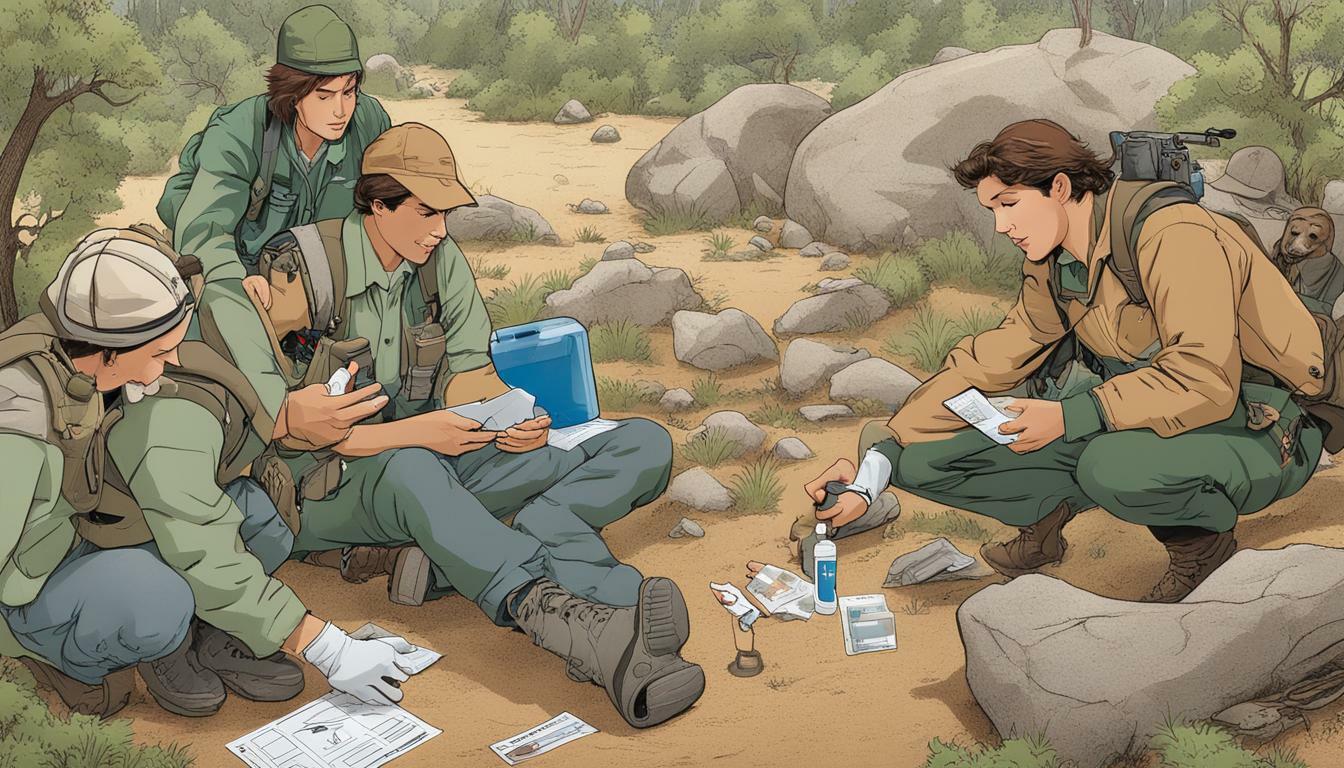
Remember, the best way to handle an emergency is to be prepared for it. By getting wilderness first aid training, you will be prepared to handle any medical emergency that may arise while observing wildlife. You will gain the confidence to take quick and effective action, which could mean the difference between life and death.
Maintaining and Restocking Your Wildlife First Aid Kit
After purchasing a first aid kit for your wildlife tracking adventures, it is essential to keep it properly maintained and restocked. This will ensure that you always have the necessary supplies on hand in case of an emergency.
One important aspect of maintaining your wildlife first aid kit is regularly checking the expiration dates on all items. Replace any expired items immediately to avoid using ineffective supplies during an emergency.
In addition to checking expiration dates, it is also important to replenish any supplies that have been used. Keep track of what has been used and make sure to restock those items promptly. This will help ensure that your first aid kit is always ready for action when you need it most.
Another important aspect of maintaining your wildlife first aid kit is keeping it clean and dry. Moisture can damage certain supplies, so it is essential to store your kit in a dry, protected location. Additionally, keeping your kit clean will help prevent the spread of infection in case of an open wound.
When restocking your first aid kit, make sure to include all the essential components necessary for treating injuries that may occur while observing wildlife. This should include items such as bandages, antiseptics, splints, and other supplies. Ensure that your kit is well-stocked for any potential situation.
Remember to always keep your wildlife first aid kit easily accessible and nearby while you are out observing wildlife. By regularly maintaining and restocking your kit, you can be prepared for any emergency that may arise.
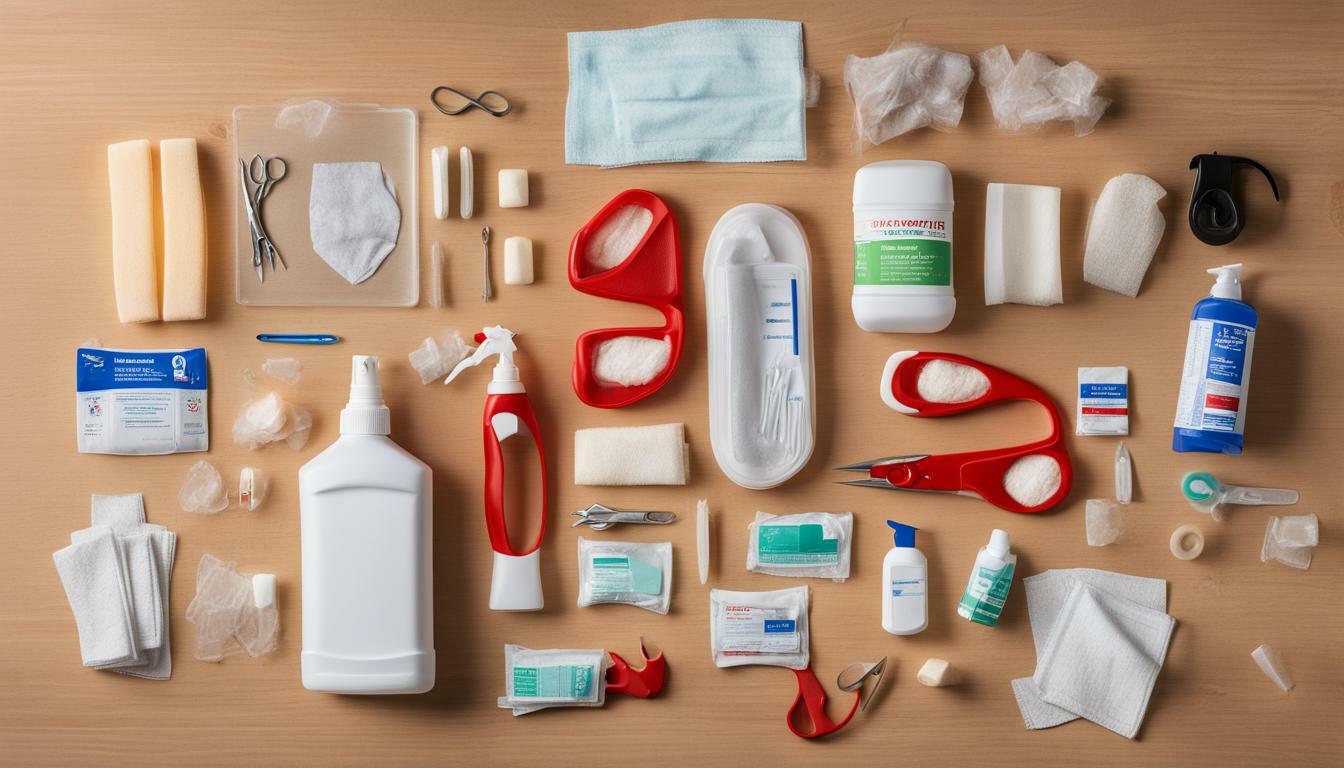
SEO relevant keywords: Maintaining and Restocking, Wildlife First Aid Kit, First Aid Supplies for Animal Observation.
Where to Buy First Aid Kits for Wildlife Tracking Enthusiasts
First aid kits for wildlife tracking enthusiasts are essential for ensuring animal observation safety in the UK. If you’re looking to purchase one for yourself, there are several places where you can find them both online and in physical stores.
One option is to check out online retailers such as Amazon or eBay, which offer a wide range of wildlife safety equipment. Alternatively, you can explore websites such as Complete Outdoors or Country Innovation, which specialize in outdoor gear and offer a variety of first aid kits for animal observation.
If you prefer to buy in person, outdoor stores such as Cotswold Outdoor, GO Outdoors, and Blacks, may have first aid kits specifically designed for wildlife tracking enthusiasts. It’s always a good idea to call ahead and check availability before making a trip to the store.
When buying a first aid kit for animal observation safety, make sure to choose one that suits your needs and is appropriate for the type of wildlife you’ll be tracking. Look for kits that contain essential components such as bandages, antiseptics, and splints, as well as any additional safety gear you may need such as snake bite kits and tick removers.
Remember, having the right first aid kit is just as important as knowing how to use it. Be sure to familiarize yourself with the contents of your kit and any emergency first aid techniques that may be necessary for treating injuries in the field.
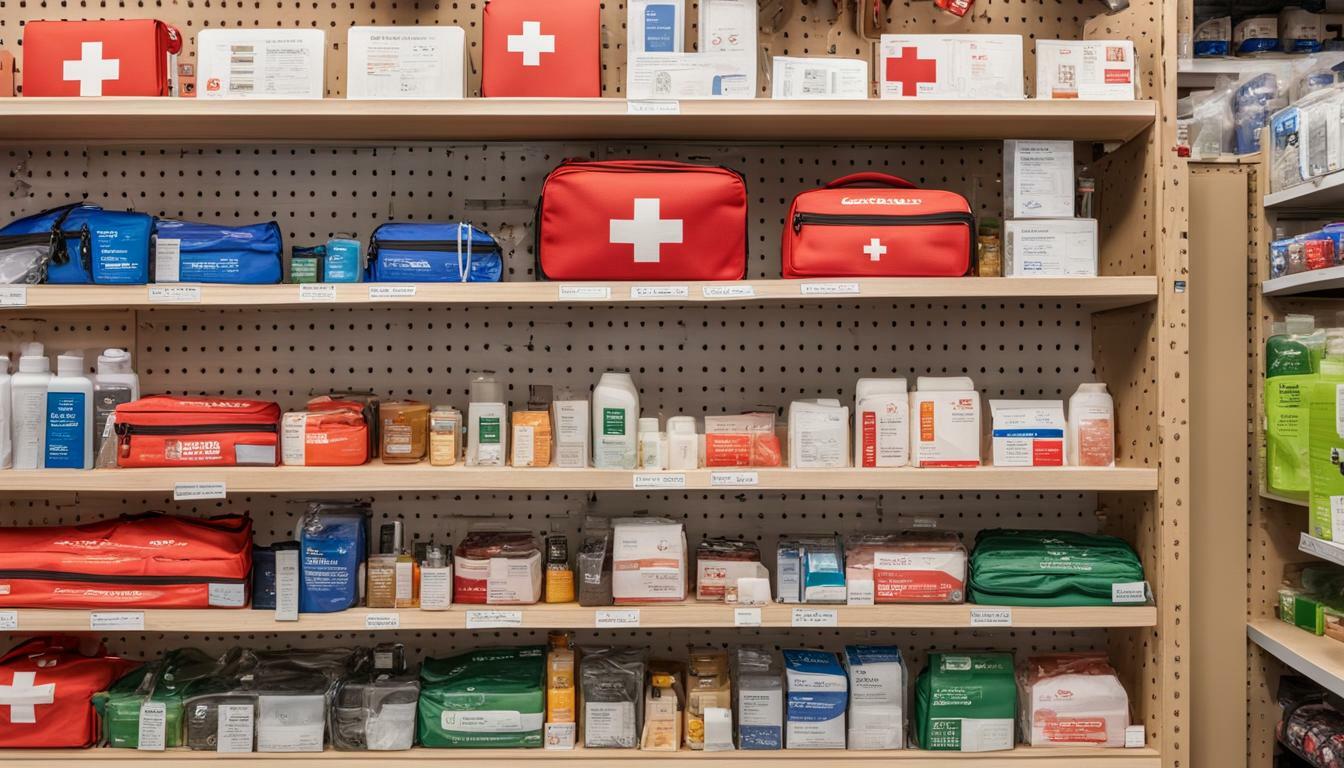
With the right knowledge and equipment, you can enjoy safe and enjoyable wildlife tracking experiences in the UK. So don’t hesitate to purchase a first aid kit for animal observation safety and stay prepared for any situation that may arise.
Conclusion
It is crucial for wildlife tracking enthusiasts to have first aid kits designed specifically for animal observation safety. Accidents can happen anytime, anywhere, and with the right supplies, injuries can be treated promptly to prevent further harm. By investing in wildlife first aid kits, you can stay safe and prepared while enjoying your wildlife adventures in the UK.
